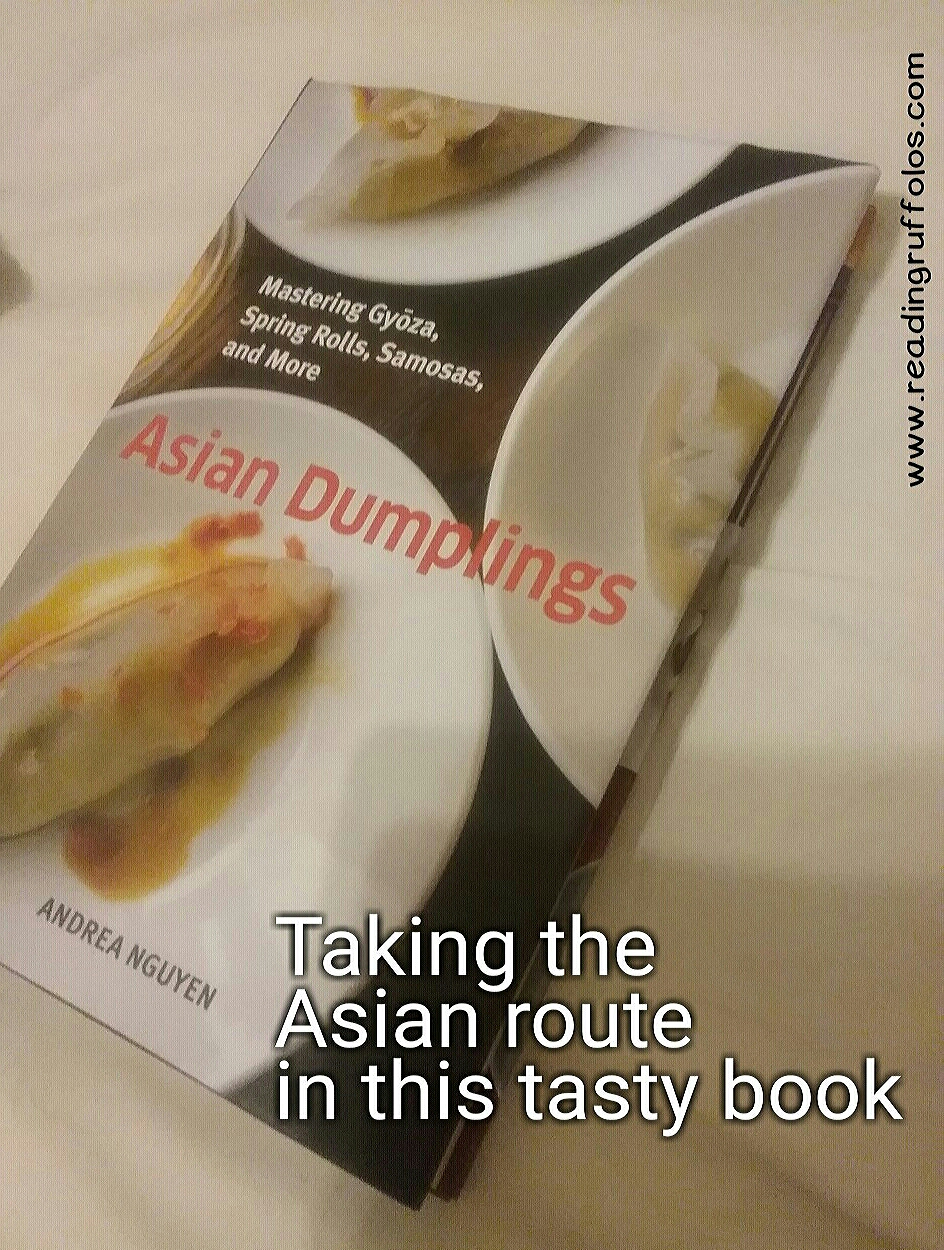Andrea Nguyen dishes out an exhaustive list and recipes of an Asian classic by coming out with a book that discusses a distinct yet seldom-discussed part of Asian cuisine: dumplings. Taking the Asian route in the book Asian Dumplings: Mastering Gyoza, Spring Rolls, Samosas and More, Nguyen searched all around East, South, and Southeast Asia for perfect recipes of these unassuming bites from heaven.
Before I go on with this review, I’d like to clarify on the generic term dumplings that Nguyen used in this book. She described dumplings as: “On occasion, they feature meat or seafood, but for the most part, they involve dough made from staple grains, legumes or vegetables, along with water, salt, and sometimes, leaven… after spending much time pondering, researching, and preparing these foods, I can conclude that for the purpose of this book, Asian dumplings include savory and sweet dishes that are made from balls of dough, or are small parcels of food encaser in pastry, dough,batter or leaves.”
I made this known early on this review since China’s jiaozi is translated in English as dumpling and that might create confusion among the readers of this review as the only type of dumpling there is.
Reading Nguyen’s brought back several happy memories of my childhood in the Philippines and the years I spent as an adult in China. Both countries have Asian dumplings in their cuisines.
I grew up in the Philippines where my mother made lumpia (page 87) as a viand paired with rice. There are different variations from the meaty recipe that Nguyen wrote in this book to my Mom’s vegetable lumpia version which is basically carrots, cabbage, green beans sautéed in shallots and garlic cloves, cooled down, rolled in lumpia wrappers, and then deep fried. Oh, best paired with banana ketchup. That was my Mom’s way of enticing us, children, to eat our veggies. Turon (page 194) was my staple snack as a child. Turon – or banana with jackfruit slices rolled in lumpia wrapper and then deep fried to perfection – had capped off several of my afternoons as a child. And then, there’s siopao (or Filipino chicken and eggs buns found on page 103) which was a treat that my grandmother would get me after she comes home from tending her seafood business. These days, siopao is not just limited to pork and beef fillings. It has expanded to vegetables – and good heavens, they’re great tasting too! I tasted the best vegetable siopao from a Cebu-based café called Leona’s.
I lived in Shanghai in 2010 and xialongbao (soup dumplings) was a mad hit in my favorite Chinese city. People line up for hours at Nanxiang Mantou Dian (Nanxiang Steamed Buns Restaurant) inside Shanghai’s Yuyuan Garden. I lived in Guangzhou – the capital city of Guangdong Province where Cantonese cuisine hails from – from 2014 to mid-2015 and while I was there, I sure did bask in the glory of dimsums.
Nguyen’s Asian Dumplings was a walk down memory lane. Lumpia, siopao, turon, xiaolongbao, gyozas, and recently, samosas are all part of my gastronomic history. Reading one recipe after another would make you go to the kitchen and just cook.
At the same time, Nguyen wrote a book that introduced less known variaties of Asian dumplings. Tarkari momo or Nepalese vegetable and cheese dumplings is a revelation to me.
Nguyen teaches the readers to make wrappers from scratch in this book. I have never done this and I have no plans, as of the moment, to do so. I’m too lazy. I’m content about buying my wrappers in the supermarket or the Vietnamese fried spring rolls in Amazon.
Included in this book are the list and descriptions of equipment and tools you need to have should you choose to go the dumpling route (e.g. wooden-dowel rolling pin and Chinese steamer). Nguyen also included recipes for sauces and stocks which will make your dumplings tastier.
This is my happy cookbook. It has little pieces of home that warms my heart in the middle of winter. I made lumpia for Thanksgiving; I’m making adobo and lumpia (again) for Christmas Eve dinner. Nothing like bite-sized treats on special occasions. Merry Christmas everyone!
***
Disclosure of Material Connection: I received this book free from Blogging for Books. I was not required to write a positive review. The opinions I have expressed are my own.Some of the links in the post above are “affiliate links.” This means if you click on the link and purchase the item, I will receive an affiliate commission. Regardless, I only recommend products or services I use personally and believe will add value to my readers. I am disclosing this in accordance with the Federal Trade Commission’s 16 CFR, Part 255: “Guides Concerning the Use of Endorsements and Testimonials in Advertising.”




